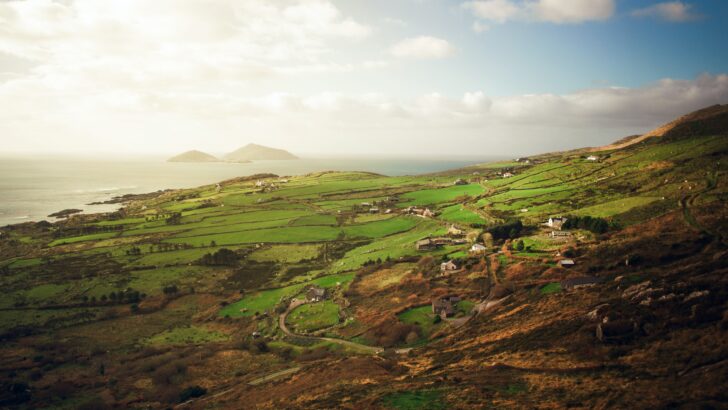Kerry from Maps and Charts, by Noel Kissane (Killiney Press, €30.00 / £24.00)
Maps are nearly as old as mankind itself. They are treasured by historians, as they can provide important information in a variety of ways.
The author of this book was a librarian at the National Library, a well informed and helpful scholar in a way some libraries these days cannot manage having gone over to administrating rather than curating.
In this collection of maps Kissane, now in a productive retirement, begins his survey with Ptolemy’s World Map. Ptolemy was a celebrated mathematician, astronomer and geographer who resided in Alexandria in Egypt.
With information from sailors, traders, travellers and literary sources he published his Geography in the year 150, a detailed compendium of place names, on which a map was created (though many think not by Ptolemy himself).
However, seemingly it did not arrive in Ireland until about 1400, when printed editions featuring it were published on the Continent and widely disseminated.
Kissane reproduces from Ptolemy’s map the figures of an island named Hibernia, which is placed at the edge of Western Europe, the very edge of a world centred on Jerusalem.
He points out that the geographical features in it for the Kerry area are estuaries or bays that seem to represent the Shannon estuary, Tralee Bay, Dingle Bay and Kenmare Bay.
In addition the tribes Vellabori, Iverni and Gangani are assigned to the general region of the present counties of Kerry, Cork and Limerick.
As part of its conquest and to facilitate the administration of the country, the English produced maps of Ireland. The author reproduces a number of those from the Tudor Period (1485-1603).
They provide 45 names for places in the Kerry area. They also name and locate the principal families: O’Connor Kerry, Fitzmaurice, Knight of Kerry and O’Sullivan Mór. And they delineate the rivers Feale, Lee, Maine, Inny, Caragh, Laune and Roughty.
From the late 17th Century onwards enterprising landlords had their estates surveyed and mapped. Kissane reproduces the estate maps for the Fitzmaurice estates, Trinity College estate, Denny estate and other individual estates.
This is of interest in the first place, as it indicates who were the proprietors of the lands of Co Kerry. Some of the holdings were enormous: the Fitzmaurice estates amounted to 70,000 acres, that of Trinity College to 50,000 acres. Both of those acreages were far less than that of the Lansdowne estate.
The estate maps provided a wealth of information. They showed the townland boundaries, the border lines between arable land, pasture, bog, woodland and the acreages of each.
The Fitzmaurice estate map includes the plans of Listowel, Ardfert and Lixnaw. The plan of Listowel, with the fully developed Square in the centre of it, is dated 1762.
Arguably the most interesting maps are those of roads. One of the first aspects of Irish infrastructure to which the United Kingdom directed its attention was the network of main roads used for the carriage of mail.
Legislation was enacted in 1805-6 to enable the post office to undertake a national survey to determine the most practicable routes for the provision of postal and passenger services. To this end the Kerry roads were surveyed by William Larkin in 1810-16.
In this study it is fitting that the remarkable civil engineer Richard Griffith (1784-1878) is given a chapter to himself. Best known for his Griffith’s Valuation (1830-64) he was always engaged on a number of projects. In 1821 he compiled two estate maps for Trinity College.
The county map shows rivers, lakes, bogs and roads. The Iraghticonnor map shows churches, ruins, demenses, towns and villages. But Griffith is best remembered for laying out 243 miles of road and erecting 18 bridges – much of this work in Kerry. His finest bridge, still to be seen, is one of five arches and spans the river Feale at Listowel.
Historians and especially local historians will warmly welcome this excellent monograph, delighting in its insights, the product of a lifetime of dedicated scholarship.



